So you’ve decided it’s time to sculpt six-pack abs. You’re hitting the gym with determination and visions of washboard abs glistening under the sun. But before you dive headfirst into those crunches and sit-ups, pump the brakes. Not all exercises are created equal when it comes to chiseling out your midsection masterpiece. I’ve rounded up seven of the least effective exercises for a six-pack and what to do instead.
The journey to a defined midsection isn’t just about sweating it out with any old ab exercise; it’s about efficiency, effectiveness, and a touch of strategy. In this guide, I’ll unveil the seven least effective exercises for six-pack abs and provide solid alternatives to maximize your efforts. Get ready to trade in old-school crunches for some serious core-sculpting power moves.
1. Basic Crunches
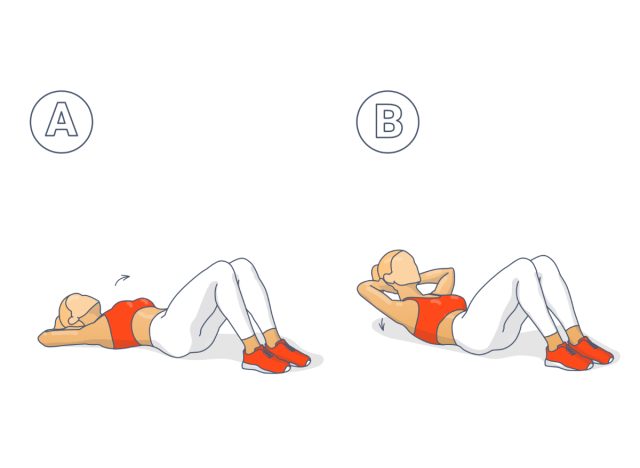
Basic crunches primarily target the upper abdominal muscles, often neglecting the deeper core muscles and failing to effectively engage the entire abdominal wall.
What you should do instead: Reverse Crunches
Reverse crunches focus on the lower abdominal muscles, which are crucial for achieving a balanced and sculpted core. By lifting the hips off the ground and bringing the knees toward the chest, reverse crunches engage the rectus abdominis and the lower fibers of the transverse abdominis more effectively, promoting a stronger core and enhanced definition.
How to do reverse crunches: Start by lying flat on your back with your arms by your sides or underneath your glutes for support. Bend your knees and lift your legs off the ground, keeping them bent at a 90-degree angle. Using your lower abs, exhale as you lift your hips off the ground and bring your knees toward your chest. Pause briefly at the top of the movement, then slowly lower your hips back down to the starting position while inhaling.
Aim for three sets of 12 to 15 repetitions with a three-second lowering. Focus on controlled movements and maintain tension in your lower abs throughout the exercise. Rest for 60 seconds between sets.
2. Sit-ups
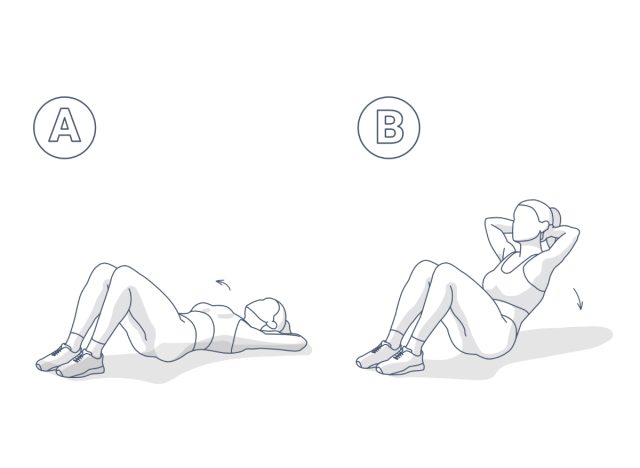
Sit-ups can strain the lower back and neck, especially if not performed properly.
What you should do instead: Leg Raises
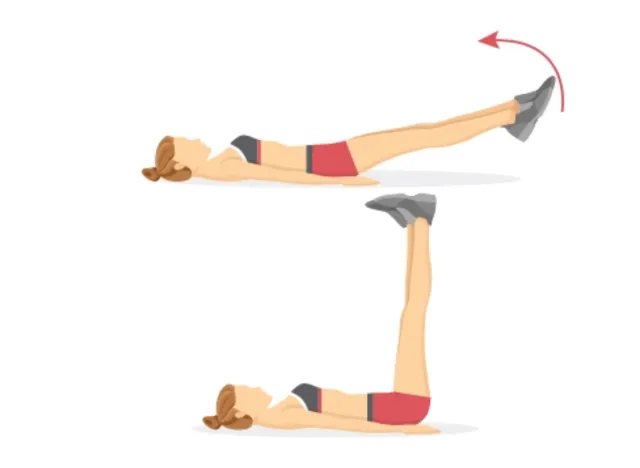
Leg raises target the lower abdominal muscles more effectively while engaging the hip flexors. This exercise helps strengthen the entire core and improves stability, which is crucial for achieving a balanced and sculpted midsection.
How to do leg raises: Lie flat on your back with your legs straight. Place your hands palms down under your glutes for support, or you can hold onto a bench or sturdy object behind your head. Keeping your legs straight, lift them upward until they form a 90-degree angle with your torso. Lower your legs back down slowly, keeping your core engaged throughout the movement to avoid swinging or arching your back.
Aim for three sets of six to 12 repetitions, focusing on controlled movements rather than speed. Rest for 60 seconds between sets.
3. Machine Ab Crunches
Machine ab crunches often isolate the abdominal muscles without engaging other core muscles or promoting functional strength.
What you should do instead: Cable Woodchoppers
Cable woodchoppers involve rotational movement that targets the obliques and transverse abdominis, promoting a more functional core strength that translates to real-life activities and sports.
How to do cable woodchoppers: Attach a D-handle to a cable machine set at shoulder height. Stand sideways to the machine with your feet shoulder-width apart, grasping the handle with both hands. Start with your arms straight and pull the handle diagonally across your body, rotating your torso as you do so. Keep your core engaged throughout the movement and control the weight as you return to the starting position.
Perform three sets of eight to 15 repetitions on each side, focusing on smooth, controlled movements and maintaining proper form. Rest for 90 seconds between sets.
4. Twisting Crunches
Twisting crunches can strain the spine and often focus too much on the obliques rather than engaging the entire core.
What you should do instead: Russian Twists
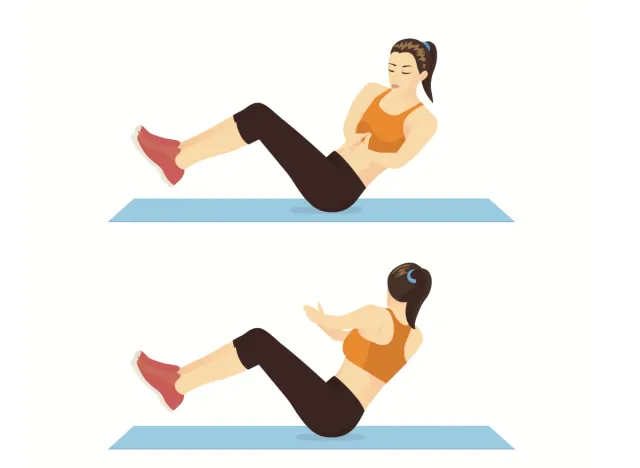
Russian twists engage the entire core—including the obliques, rectus abdominis, and transverse abdominis—while improving rotational stability and balance.
How to do Russian twists: Sit on the floor with your knees bent and feet lifted off the ground, leaning back slightly to engage your core muscles. Hold a weight or medicine ball with both hands before your chest. Twist your torso to the right, bringing the weight beside your hip. Return to the center and twist to the left, alternating sides while keeping your core tight and maintaining balance.
Complete three sets of 12 to 15 twists on each side, focusing on engaged movements and breathing throughout the exercise. Rest for 60 seconds between sets.
5. Ab Roller
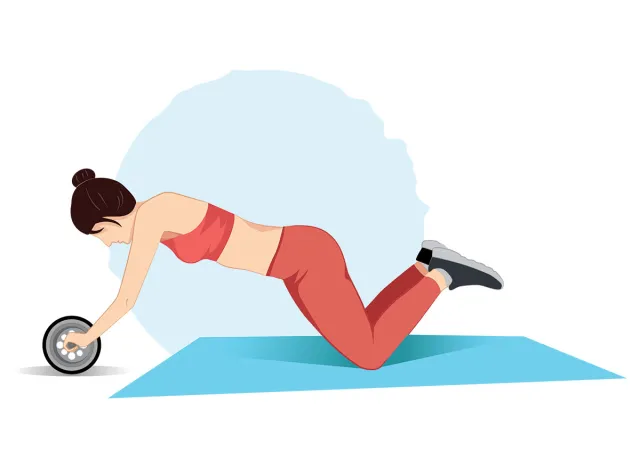
If not performed correctly, the ab roller can strain the lower back and shoulders excessively.
What you should do instead: TRX Fall-outs
TRX fall-outs provide a safer alternative that effectively targets the core muscles, particularly the abdominals, and stabilizes muscles without the risk of injury. By using the TRX suspension trainer, you can adjust the difficulty of the exercise based on your fitness level, making it accessible for beginners and advanced athletes alike. This exercise promotes core strength and stability through a controlled movement that engages the entire core, helping you achieve better abdominal definition and functional strength.
How to do the TRX fall-out: Begin by adjusting the TRX suspension trainer to a length that allows you to perform the exercise comfortably. Stand facing away from the anchor point with your feet shoulder-width apart and lean forward, placing your hands in the TRX handles at chest height. Engage your core and maintain a straight line from your head to your heels as you extend your arms forward, lowering your body toward the ground. Keep your hips and shoulders square throughout the movement to avoid rotation. Pause briefly when your body is fully extended, then use your core muscles to pull yourself back to the starting position.
Aim for three sets of six to 10 repetitions, focusing on controlled movements and maintaining tension in your core throughout the exercise. Rest for 90 seconds between sets.
6. Hanging Leg Raises
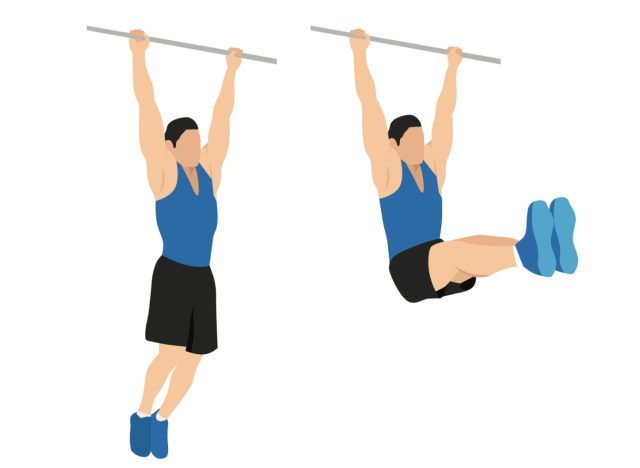
Hanging leg raises are phenomenal, but they are not for everyone, especially beginners. This exercise requires a lot of excess grip strength and may not effectively target the lower abs if momentum is used to lift the legs.
What you should do instead: Lying Leg Raises
Lying leg raises on a bench or mat provides a stable position to isolate and strengthen the lower abdominal muscles more effectively.
How to do lying leg raises: Lie on your back on a bench or mat with your hands under your glutes for support. Keep your legs straight and lift them upward until they form a 90-degree angle with your torso. Lower your legs back down slowly, keeping your core engaged throughout the movement to avoid swinging or arching your back.
Complete three sets of 10 to 15 repetitions, focusing on controlled movements and maintaining proper form. Rest for 60 seconds between sets.
7. Standing Side Bends
Standing side bends primarily work the oblique muscles but can strain the spine and contribute to poor posture if done incorrectly.
What you should do instead: Pallof Press
The Pallof press targets the entire core—including the obliques, rectus abdominis, and transverse abdominis—all while improving stability and balance.
How to do the Pallof press: Attach a resistance band to a sturdy anchor point or use a cable machine set at chest height. Stand perpendicular to the anchor point with your feet shoulder-width apart and grasp the handle with both hands at chest height. Extend your arms fully before you, then press the handle away from your body, keeping your core engaged and resisting rotation. Hold for a few seconds, then return to the starting position and repeat on the other side.
Aim for three sets of 10 to 20 repetitions on each side, focusing on maintaining stability and control throughout the exercise. Rest for 60 seconds between sets.









